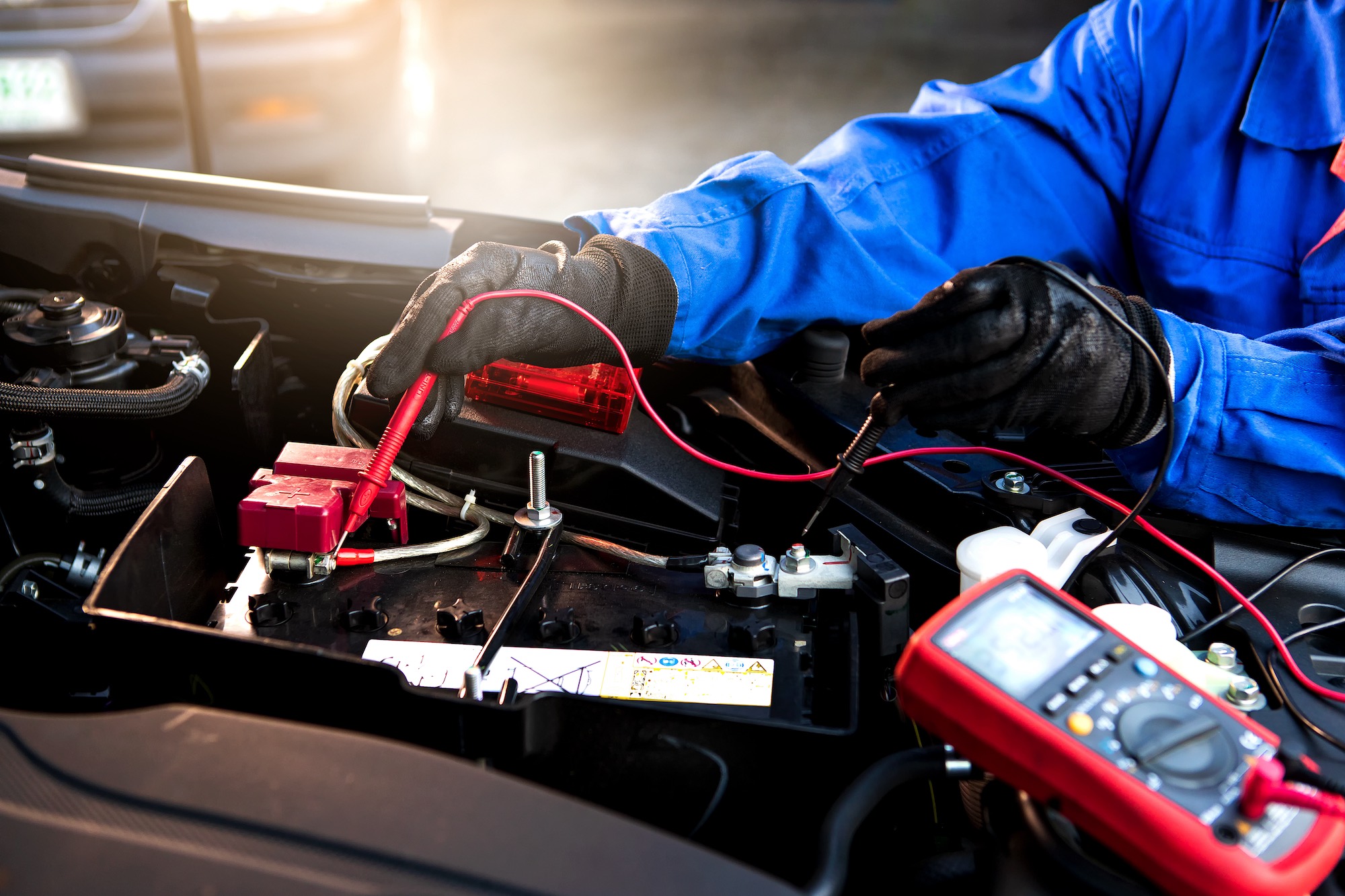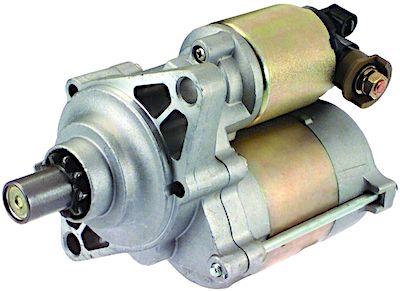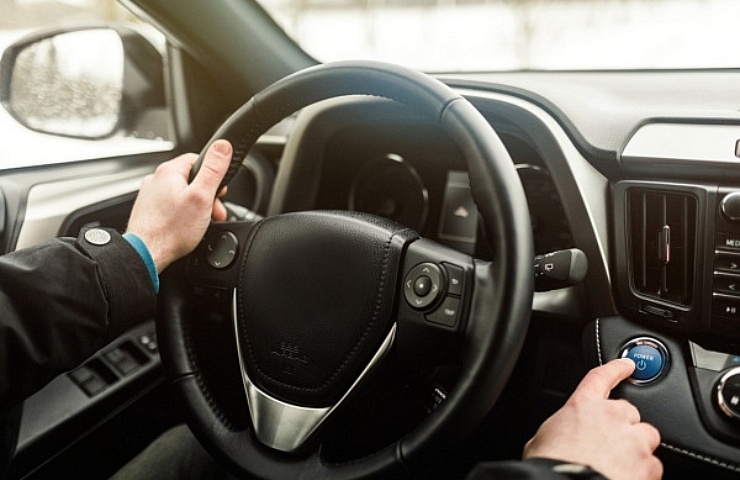Contents
Simple Causes for a Car That Won’t Start

Blown starter fuses or bad relays can cause a no-start condition.
Here is a list of the simplest reasons for no-crank:
- Bad connection – This is the most common cause for a no-crank without previous warning signs. Check for corroded terminals, loose terminal or wire connections, or a broken wire or terminal.
- Dead battery – The second most common cause is a dead battery. You may have left a light on or something charging in the accessory port, or perhaps the battery is failing. If your vehicle’s interior lights and gauges turn on and then blink off or dim severely when you hit the key, a discharged battery is a good possibility.
- Shifter neutral safety switch or clutch safety switch – A switch inside the shifter or clutch pedal controls whether or not the starter can be engaged, based on the position. Automatic transmissions can start in park and sometimes in neutral. Manual transmissions have a similar clutch interlock safety switch that only allows the engine to crank if the clutch pedal is depressed. You can get a no-crank if the switch fails or the shifter is not fully positioned.
- Fuse or relay – Most vehicles have several fuses that can cause a no-crank if they blow. While the starter cable itself is not fused, the trigger wire often is. These fuses are often labeled “start,” “starter,” “crank,” or sometimes, “ignition.” Check your vehicle’s manual to find the fuses directly related to the starter mechanism. Only replace the fuse with the size called for in the manual.
Trickier Situations
If the simple fixes above don’t do the trick, it’s time to step up the investigation.
- Bad starter or solenoid – Modern cars should go 100,000 to 150,000 miles before a starter fails, but it can happen at any time. There’s not much warning before it goes, but sometimes it will crank a little slower or start to crank and then stop and free-spin a few times before going out.
- Bad battery – This is a bit tricky only because it is not an easy fix in a parking lot. A bad battery may light your interior lights but not crank the starter. If the battery has completely died, it may come back with a good charge, but it will likely never come all the way back after a deep discharge. If the battery has shorted internally, it may show 12 volts on a test meter but not actually have any available current.
- Failed ignition switch or module – The ignition switch that you put your key into is different from the actual switch. The key cylinder activates the switch through a rod, lever, or electrical connection, which can fail. The engine may crank and not start or not crank at all.
Major Problems
If none of the above work and the car won’t start, it’s time to get serious.
- Damaged engine – There’s usually some warning, as most engines don’t just lock up overnight. If the engine is damaged, the starter will make a loud clunking sound as it tries to turn the engine over.
- Damaged flywheel or flexplate – The starter turns the engine over via the teeth on the flexplate or flywheel bolted to the engine. If these teeth are chipped, the starter won’t engage. It will bounce off the flexplate or flywheel and make a lot of noise. Sometimes, it grinds, but usually, it just free spins.
Troubleshooting a Car That Won’t Start
First, check whether the starter is engaging and spinning. If the engine turns over, then it is not a battery issue. If the starter spins with a high-pitched whine, the issue is in either the starter or flexplate. But if the starter is clicking or not engaging at all, then the issue is likely power related.

Testing a car battery’s voltage
When there is no power, the interior and dash lights don’t illuminate. This means either a dead battery or a bad connection. You can check this with a digital multimeter or test light by touching the leads to the positive and negative battery terminals.
Also, check the battery terminals and the wire leads bolted to ensure the connections are tight. Look for corrosion on the terminal or wire, which can cause too much resistance for the electricity to flow. Tighten loose connections and clean the terminals with a terminal brush, sandpaper, or a round file. Pouring a bit of soda over the terminals will clean the corrosion, but if the terminal is corroded between the battery post and the terminal, it won’t help.
Once you have made sure the terminals and wires are clean and tight, then you can try to jump-start the vehicle. Always connect the positive cable first and then ground to reduce the potential for shorting the cables. Turn the key to the “run” position in the problem vehicle.
If it powers up, then you can proceed with jump-starting. Before attempting to start the problem vehicle, rev the engine in the assisting vehicle to 2000 to 2500 rpm for a few minutes while the key is off in the problem vehicle. If the problem vehicle is still dead when connected to the assisting vehicle’s battery, then you most likely have a bad wire or terminal.
Shop now for digital multimetersBeyond the Battery
If the starter is spinning freely, then it’s most likely failing. You can sometimes get a starter to work by tapping it with a hammer, pipe, or other hard object. This works when the starter is beginning to fail, but only for a short time. If the starter does work again after a few hard knocks, get a new starter as soon as possible.

1998-2005 Honda Civic starter
If the vehicle powers on but there is no response when you hit the key—no noise, not even clicking—then you likely have an issue with the starter or a module.
- First, verify that the terminals and wires are connected, tight, and not corroded.
- Put the shifter into gear and then into park a few times to ensure park is fully engaged.
- If this doesn’t work, jiggle the key in the cylinder since sometimes a worn-out key will keep the vehicle from starting.
- Should this fail, tap the starter with a hammer, wrench, or block of wood to see if it will crank.
If you have tried all these tips and your car still won’t start, your issue is likely deeper than a simple driveway fix and requires further diagnostics. But most of the time, the problem lies in a bad connection or a discharged battery, and you can get your car quickly back on the road.
Shop now for starters




